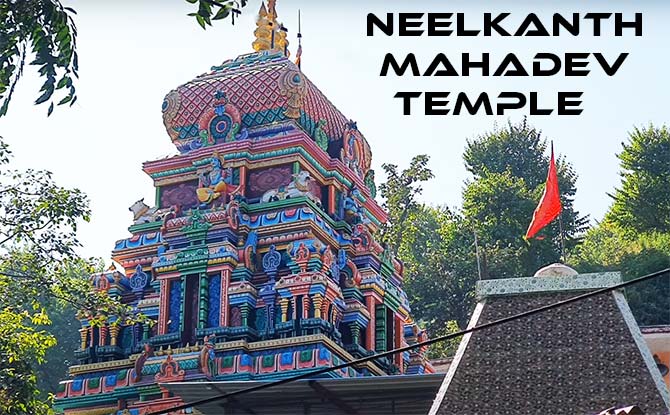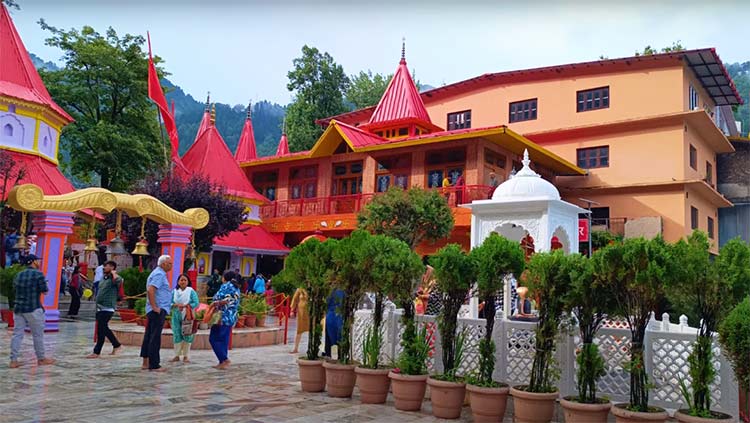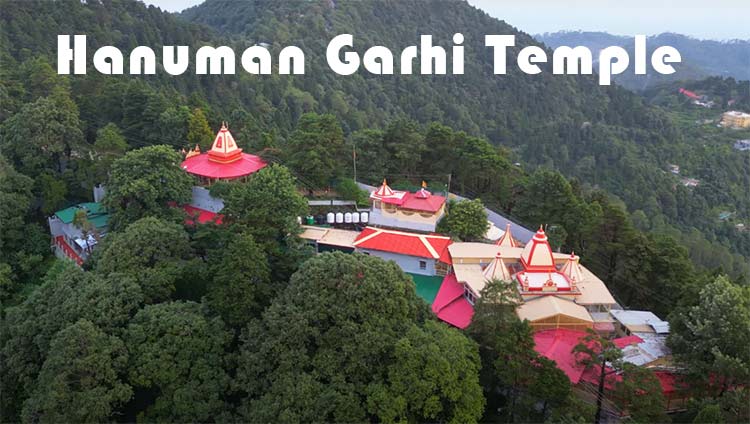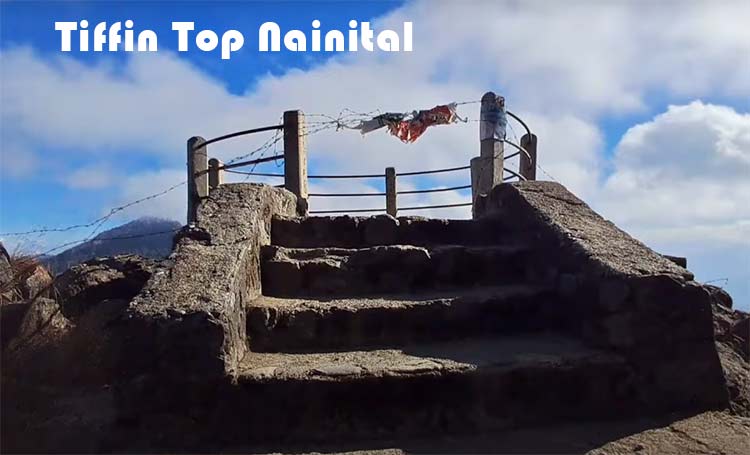In Uttarakhand, India, you’ll find the Neelkanth Mahadev Temple. This special place shows off Hindu stories and great building skills. People come here to pray to Lord Shiva. The temple is both very holy and very pretty. In this guide, we’ll tell you all about the temple’s long history, why it’s important to people, and useful facts for visitors.

Location and Surroundings
The Neelkanth Mahadev Temple is situated approximately 25 kilometers from the holy town of Rishikesh in Uttarakhand. Perched at an elevation of 1,330 meters above sea level, the temple offers breathtaking panoramic views of the surrounding Himalayan landscape. Its location is truly a feast for the senses, with dense forests enveloping the sacred site and the majestic Nar-Narayan mountain range serving as a dramatic backdrop.
The temple’s setting is further enhanced by its position at the confluence of three sacred valleys:
- Manikoot
- Brahmakoot
- Vishnukoot
Adding to the spiritual ambiance, two rivers, Pankaja and Madhumati, merge near the temple grounds, creating a serene and picturesque environment for devotees and nature enthusiasts alike.
Historical Significance and Mythology
The Neelkanth Mahadev Temple is steeped in Hindu mythology, with its name and significance deeply rooted in ancient legends. The term “Neelkanth” translates to “blue throat” in Sanskrit, directly referencing a pivotal moment in Hindu cosmology.
According to Hindu scriptures, the temple’s origins are tied to the famous episode of Samudra Manthan, or the churning of the cosmic ocean. This monumental event involved both gods (devas) and demons (asuras) working together to extract the nectar of immortality, known as Amrit, from the depths of the celestial sea.
However, before the Amrit could be obtained, a potent poison called Halahala emerged from the churning waters. This venomous substance threatened to destroy all of creation. In a selfless act to save the universe, Lord Shiva stepped forward and consumed the poison, holding it in his throat rather than swallowing it. This heroic deed turned his throat blue, earning him the epithet “Neelkanth.”
Legend has it that after this cosmic event, Lord Shiva chose this very location to meditate and perform deep penance. Ancient texts suggest that he spent a considerable amount of time in contemplation at this site, imbuing the area with profound spiritual energy.
Architectural Marvel
The Neelkanth Mahadev Temple is a stunning example of religious architecture, blending elements from various Indian styles to create a unique and awe-inspiring structure.
Exterior Design
The temple’s most striking feature is its towering gateway, known as a Gopura. This architectural element is characteristic of the Pandya style, which originated in Tamil Nadu, South India. The Gopura is designed in a stepped pyramid shape, creating an imposing and grand entrance to the sacred complex.
Intricate carvings and decorative friezes adorn the tower, showcasing the skill and devotion of the artisans who contributed to its construction. These detailed embellishments often depict scenes from Hindu mythology, providing visitors with a visual narrative of ancient stories and beliefs.
The main spire of the temple, rising majestically above the surrounding landscape, is adorned with an array of sculptures. These carefully crafted figures represent various deities and demons, with a particular focus on illustrating the Samudra Manthan episode. This artistic representation serves not only as decoration but also as a means of preserving and communicating important mythological events to future generations.
Interior and Sacred Spaces
At the heart of the temple lies the sanctum sanctorum, home to the presiding deity, Neelkanth Mahadev. Here, Lord Shiva is represented in the form of a Shivalinga, a sacred symbol of great importance in Shaivite traditions. The presence of this revered icon draws countless devotees who come to offer their prayers and seek blessings.
A unique feature of the temple complex is the natural spring located within its grounds. This pristine water source plays a crucial role in the temple’s rituals and pilgrim experiences. Many devotees choose to take a ritual bath in these sacred waters before entering the main temple area, believing it to purify both body and soul in preparation for worship.
Spiritual Significance and Pilgrimage
The Neelkanth Mahadev Temple holds immense spiritual significance for followers of Hinduism, particularly devotees of Lord Shiva. Its connection to the Samudra Manthan legend and Lord Shiva’s act of cosmic salvation makes it a powerful site for spiritual seekers.
The temple sees a significant influx of pilgrims during the month of Sawan (typically falling in July or August in the Gregorian calendar). This period is considered especially auspicious for worshipping Lord Shiva. During this time, devotees undertake a special pilgrimage known as the Kanwar Yatra.
As part of this sacred journey, pilgrims collect water from the holy Ganges River and carry it, often on foot, to offer at the Neelkanth Mahadev Temple. This act of devotion is believed to be particularly pleasing to Lord Shiva and is thought to bring blessings and spiritual merit to the devotees.
Visitor Information
For those planning a visit to the Neelkanth Mahadev Temple, here are some essential details to keep in mind:
Timings:
The Neelkanth Mahadev Temple welcomes visitors throughout the day, from the early morning hours when the sun is just beginning to peek over the horizon, until the evening when twilight starts to settle in. The temple doors open at 5:00 AM, allowing early risers and devoted pilgrims to start their day with prayers and blessings. The sacred space remains accessible to all throughout the daylight hours, closing its doors at 6:00 PM as dusk approaches.
This daily rhythm of opening and closing repeats without interruption, as the temple maintains its schedule every day of the week, every week of the year, ensuring that seekers and tourists alike always have the opportunity to experience its spiritual ambiance and architectural beauty.
Address and Coordinates
- Location: 25 Km away from Rishikesh, Kotdwar Pauri Road, Kotdwar, Uttarakhand – 246149
- Coordinates: Latitude 30.0811° N, Longitude 78.3406° E
How to Reach
The temple is easily accessible by road from Rishikesh, which serves as the primary starting point for most visitors. There are two main routes to reach the temple:
- Badrinath Highway Route: Follow the Badrinath Highway and cross the Neelkanth Bridge, located approximately 7 kilometers from Lakshman Jhula.
- AIIMS Bridge Route: Take the bridge near AIIMS and travel through the Swargashram area.
Both routes offer scenic drives through the lush Uttarakhand landscape, providing visitors with a memorable journey to the temple.
Conclusion
The Neelkanth Mahadev Temple shows how India has a long history of faith and great building skills. It’s in a beautiful place, full of old stories and pretty nature. This gives visitors a special feeling. If you’re someone who prays a lot and wants blessings, or just someone who likes learning about history and different ways of life, this old temple will amaze you. When you’re there, looking at the statue of Lord Shiva (who has a blue neck) and seeing the big Himalaya mountains all around, you’ll feel close to very old traditions and the strong power of believing in something.
You may also like:
Neelkanth Mahadev Temple FAQ
It’s in Uttarakhand, India, about 25 km from Rishikesh.
It means “blue throat” in Sanskrit, referring to Lord Shiva drinking poison to save the universe.
The temple is at 1,330 meters above sea level.
It’s at the meeting point of three valleys and two rivers, surrounded by forests and mountains.
The temple has a towering gateway called a Gopura, in the Pandya style from South India.
Lord Shiva, represented as a Shivalinga in the sanctum sanctorum.
The month of Sawan (July-August) is considered especially auspicious.
It’s open daily from 5:00 AM to 6:00 PM.
By road from Rishikesh, via either the Badrinath Highway or the AIIMS Bridge route.
Yes, the Kanwar Yatra, where pilgrims bring Ganges water to offer at the temple.
You can discover additional Tourist Attractions by clicking the link below
Tourist attractions in Rishikesh



